- Little backyard houses — aka “accessory dwelling units” — are springing up all over Vancouver.
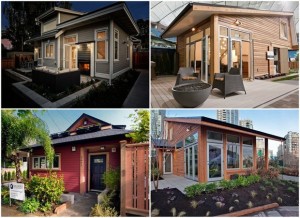 This is a partial remedy to the affordable rental shortage that afflicts municipalities all over North America, including Vermont. It also affords an optional living arrangement for older people who want to age in place. In Vancouver, these appendages are called “laneway houses,” and some of them are pretty handsome. There’s plenty of room for additions like this in Burlington, even if we don’t have alleys — and in plenty of other Vermont communities, too.
This is a partial remedy to the affordable rental shortage that afflicts municipalities all over North America, including Vermont. It also affords an optional living arrangement for older people who want to age in place. In Vancouver, these appendages are called “laneway houses,” and some of them are pretty handsome. There’s plenty of room for additions like this in Burlington, even if we don’t have alleys — and in plenty of other Vermont communities, too. - A “mobility program” in heavily segregated Baltimore moves families from high-poverty public housing complexes in the city to higher-rent, higher-opportunity suburbs. This is an initiative very much in the spirit of affirmatively furthering fair housing, but it serves a small fraction of the subsidy-eligible families in need and it operates largely under the radar, to minimize opposition. One obstacle: a shortage of affordable housing in suburban communities.
- Plattsburgh has a new 64-unit affordable housing complex, called Homestead on Ampersand.
 It’s just a couple of miles from the neighborhood where complaints about a proposal for a smaller affordable housing complex prevailed.
It’s just a couple of miles from the neighborhood where complaints about a proposal for a smaller affordable housing complex prevailed. - Columbus, Ohio, plans to transform a vacant downtown building into “workforce housing” – which in this case means housing for people who make $40,000 to $60,000 a year. The made-over building would feature micro units – apartments of 300 square feet or so and targeted, presumably, to single Millennials. We’ve touched on the micro movement before, which seems to be taking hold mostly in bigger metro areas (here’s a roundup with a national map; for a more substantial study of the phenomenon, click here). But it has also spread to Kalamazoo and, as we’ve noted, Syracuse, so there’s no reason it couldn’t work in an over-priced city like Burlington, where officialdom is forever wringing its hands about how young professionals have trouble finding affordable accommodations.
Category Archives: home sharing
Strange bedfellows, or not
Not long ago we heard a tidy summary of two converging demographic trends bearing down on the affordable-housing problem:
There is the surging population of older people, Baby Boomers and beyond, who are looking to downsize.
Then there is the younger-adult population — Millennials, Gen-Xers — who are looking to up-size but can’t afford to, as they postpone buying homes.
Might there be a way to meet these divergent generational needs in some way that somehow preserves neighborhoods with a stamp of affordability?
That’s a key challenge that one of the presenters in our “Thriving Communities” seminar, John E. Davis, posed at the end of his discourse. (You can see the seminar in webinar-slide form if you click here, or in video mode if you click here.) He admitted he didn’t have any easy answers.
Neither do we, but we have a few notions that might prolong the discussion. These ideas are predicated on the fact that older people, overwhelmingly, want to age in place (that is, in their own homes); that in many cases, those homes are too big for them to manage; that increasingly, older people are open to the idea of home-sharing (as we noted in the post about a recent AARP survey in Burlington). Why not look for ways to convert big, empty houses into spaces that can accommodate both an aging widower and a young family?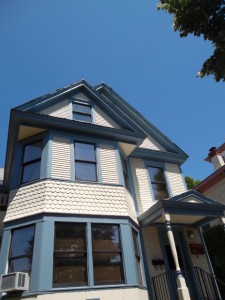
One way would be to encourage — and drop regulatory barriers from — the addition of accessory dwelling units. (For an article on how zoning can facilitate aging-in-place, click here. For an essay on aging-friendly land-use policies, click here.) The new unit could be an annex that the older person would occupy, freeing up the main house for other residents.
Or the new unit could be a self-contained space within the house itself. We’ve seen articles touting the idea of grown children adding an “in-law suite” to their own homes to house an aging parent. Why not turn that around, so that that aging person’s home is remodeled to include an independent suite that the aging person parent can then occupy, opening up the rest of the house for another owner, perhaps a young family?
How might affordability enter this picture? Perhaps as a condition of publicly subsidized financing that could be offered to promote construction of accessory units or the conversion of big old houses into duplexes. Various tax incentives could be offered for older home-owners to take these steps.
And who knows, maybe the hide-bound mortgage world could be expanded to include new forms of co-ownership or shared equity for some no-longer-strange bedfellows: Older empty-nesters aging at home compatibly under the same roof as younger full-nesters.
Note by Ted Wimpey:
Not bad, could be better: AARP’s take on BTV’s ‘livability’
A willingness to consider home-sharing is among the key findings of a new AARP survey of 500 Burlington residents age 45 and older.
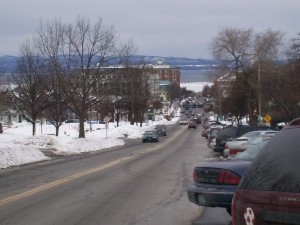 When asked if they would be open to a home-sharing arrangement with a person who could provide services in order for them to continue living in the home, 56 percent of the respondents said yes. That was up from 36 percent in an AARP survey nine years ago.
When asked if they would be open to a home-sharing arrangement with a person who could provide services in order for them to continue living in the home, 56 percent of the respondents said yes. That was up from 36 percent in an AARP survey nine years ago.
The new response suggests a pent-up demand for more accessory dwelling units on properties where older Burlingtonians want to age in place — which most respondents clearly wish to do. Seventy-nine percent “strongly agreed” when asked about their desire to remain in their current home, and 80 percent rated Burlington as a good or excellent place for older people to live.
The home-sharing finding suggests that current services, mentioned in a previous post, are undersubscribed. It also points to a need for a supportive regulatory climate for accessory dwelling units, which are, after all, an important piece in the chronic puzzle of how to come up with more affordable housing.
Another housing finding of note: Asked their opinion about building moderate- to low-income housing units in vacant lots in Burlington, 67 percent responded favorably, with 32 percent opposed. These numbers might have been slightly higher/lower is the question had used the contemporary term of choice, “affordable housing,” which has a nicer ring but which is, we have to admit, something of a euphemism.
Asked for their concerns about what might make it difficult to age in place, “high cost of living” topped the list, but it remains unclear which kinds of costs, specifically, are at issue.
Besides housing, transportation and “community engagement” were spheres covered by the telephone survey, which comprised 20-minute telephone interviews of randomly selected people. The margin of error was 4 percent. To see the full survey, “The Path to Livability: A Citizen Survey of Burlington, Vermont,” click here.
A presentation of the survey results by researcher Joanne Binette was made in AARP’s Burlington office to an audience of about two dozen people, among them housing and transportation specialists.
Older people in Burlington get around in multiple ways. Driving is still the main way (83 percent), but these people also walk (68 percent) and bike (41 percent) or take the bus (27 percent) at least some of the time.
Generally, they find it easy to get around even if they couldn’t drive (66 percent). The main drawback to bus service, they said, was the lack of weekend or evening service. (One set of bus concerns relates to schedules and routes, another to bus stops and access to them.)
Fifty-fi ve percent said they would bicycle if conditions for cyclists were better.
ve percent said they would bicycle if conditions for cyclists were better.
But are the streets safe? Apparently they’re more so for bicyclists (51 percent said streets are safe for cyclists) than for people with disabilities (41 percent), older people (36 percent) or children (33 percent) or pedestrians (27 percent).
Respondents had opinions on improving sidewalks and bus service, but appeared to be relatively satisfied with educational and social activities available to them in Burlington.
An elegant solution: home sharing
We all know that no single approach will alleviate the affordable housing crisis. Government, which bears the lion’s share of the responsibility, is not fully up to the task, and as we’ve mentioned, the issue is not even getting its share of attention in public forums or political campaigns.
Here and there, private and nonprofit initiatives peck away at the problem. Among those initiatives is home sharing, which addresses two of Vermont’s well-known trends: a greying population that wants to be able to age in place; and unaffordable housing costs for the younger set, including the proverbial young professionals.
Home sharing matches older homeowners with younger renters willing to help out who can’t afford market rents. An apt match is a win-win, as this article in Monday’s Valley News explains.
Granted, this program is a drop in the housing-unaffordability bucket, with fewer than 200 shared properties. But it’s a drop that deserves to grow, along with the post-65 population bulge that makes Vermont, by some measures, the oldest state in the country.

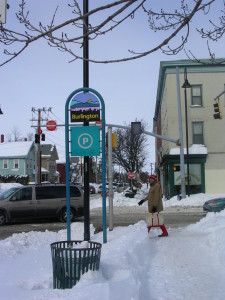
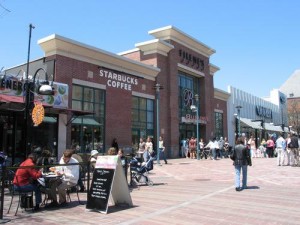
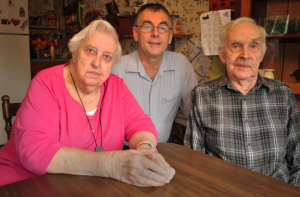
Another good option for “aging in place” is “home sharing.” Check out HomeShare Vermont for a good example.
http://www.homesharevermont.org/about-us/
“HomeShare Vermont helps people stay in their homes by connecting them with potential housemates who are looking for a place to live. While our primary goal is to help elders stay at home, we have found that people of all ages and abilities can benefit from homesharing. There are no age, ability or income restrictions to use our services. “